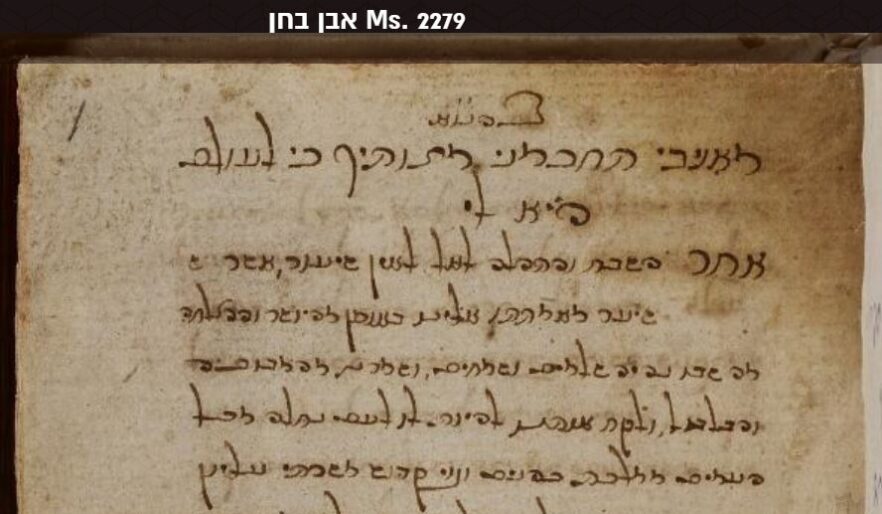
After the death of Yehudah ish-Keriot (Judas Iscariot, one of the twelve), and after the death of Yeshua of Nazareth and his resurrection, the Greek Matthew records:
Matthew 28:16 [Hebraic Roots Bible - HRB] But the eleven disciples went into Galilee, to the mount where Yahshua appointed them.
The text is clear, Yehudah (Judas) was deceased and they were no longer twelve disciples but eleven.
The Hebrew Matthew preserved in the document known as Even Bohan renders it the following way
Hebrew Matthew 28:16 [Even Bojan] his twelve disciples went to Galilee…
This verse has been considered by the critics of the Hebrew Matthew as an obvious error. How can this text say twelve disciples when in reality Yehudah had already died and only eleven were left?
According to some critics that believe that this Hebrew text is in reality a translation of a Greek or Latin text, this mention of the twelve instead of the eleven is in the best of cases is a misquote of the translator. And the reason for this, they say, is that the expression ‘the twelve’ appears a number of times in the text; therefore it is possible, in this occasion when the translator saw ‘the eleven’ he had a slip and misquoted it as “the twelve”
However, it is possible that the real reason is totally different to the conclusion of these critics. It is probable that the term ‘twelve disciples’ is an indication of the antiquity and originality of the Hebrew text.
“THE TWELVE” REFERS TO A CLOSE GROUP OF YESHUA’S DISCIPLES
To understand this we should have in mind that “the Twelve” is a title that identifies a close group of twelve disciples. Every time the text mentions “the twelve” it does not mean that only “the Twelve were present”. The objective of the author is to ratify and to underline that the close group was present during a certain event. Ultimately, after the physical absence of Yeshua of Natzaret, this group of “twelve disciples” were to become the leaders of the community of believers.
When “the Twelve” are mentioned it does not imply that only “the Twelve” were present. For example:
- Matthew 13:10 <his disciples>
- Mark 4:10 <the Twelve>
- Matthew 18:1 <the disciples>
- Mark 9:35 <the Twelve>
The title “the Twelve” does not always imply that this group was in an event exclusively, rather it is very probable that other disciples were present as well. The author wanted to emphasise that this group of community leaders were present in these important events.
Now we will look at some texts that inform us about the existence of other disciples aside from “the Twelve”
Matthew 27:57 [HRB] And late afternoon having come, a rich man from Arimathea (Joseph by name) who also himself was a disciple of Yahshua
Luke 10:1 [HRB] And after these things, Yahshua also appointed seventy others from His disciples, and sent them two by two before His face into every city and region, where He was about to go.
Acts 1:15-23 [HRB] 1:15 And in these days, standing up in the middle of the disciples, (and the number of names together being about a hundred and twenty), Peter said … 21 … it is right that men being together with us all the time in which the Master Yahshua came in and went out among us, 22 beginning from the baptism of John until the day when He was taken from us, one of these to become a witness of His resurrection with 23 And they set out two: Joseph, he being called Barsabas, who was surnamed Justus, and Matthias. ... 26 And they gave their lots. And the lot fell on Matthias; and he was numbered with the eleven apostles.
STRUCTURE WITHIN THE GROUP OF DISCIPLES
When we examine the writings of the first disciples it becomes evident that a structure exists among the disciples:
YESHUA
SHIM’ON KEPHA (PETER)
YAAKOB (Jacob) – SHIM’ON KEPHA – YOHANAN (John)
(Pillars, Galatians 2:9)
THE TWELVE
(including the Pillars)
THE DISCIPLES
(The 70 Emissaries among them)
THE TERM “THE TWELVE” CONTINUED TO BE USED EVEN AFTER YEHUDAH (JUDAS) DIED
Now let us look at the external evidence that the close group called “the Twelve Disciples” continued to be called the twelve even after Yehudah’s death and before Matthias took the place of Yehudah.
The evidence is found in one of the oldest writings of the first disciples
1 Corinthians 15:5 [HRB] and that He (Yeshua) appeared to Peter, and then to the Twelve.
Evidently at this moment Matthias had not yet been chosen to replace Yehudah however, the text clearly calls this group “the Twelve” when they were only eleven. “The Twelve” is the name of the close group originally formed by the first twelve disciples. It is interesting to find that in late copies of this letter to the community in Corinth the term “the Twelve” has been altered to read “the Eleven” as an attempt to ‘correct’ what an ancient scribe considered an error.
Conclusion: The term “the Twelve” is far from being a late reading or the result of a mistake or misquote by a translator. When we compare this reading in the Hebrew Matthew with the reading in the ancient letter of Shaul to the community in Corinth (according to the oldest manuscripts), we find that it is not only a genuine and original reading but that it is in accordance with definitions used in the first century for the community of disciples.
“The Twelve” is the title of the closest disciples of Yeshua originally formed by twelve disciples. This title continued being used to distinguish them even when the twelve disciples were not present.
Moreover it implies the possibility that the term “the Eleven” (Greek Matthew) is, in reality, an attempt to ‘correct’ the term “the Twelve” on the part of an ancient scribe that perceived it to be an error.
Source :
Avdiel ben Oved; translated by Nazarene Notes